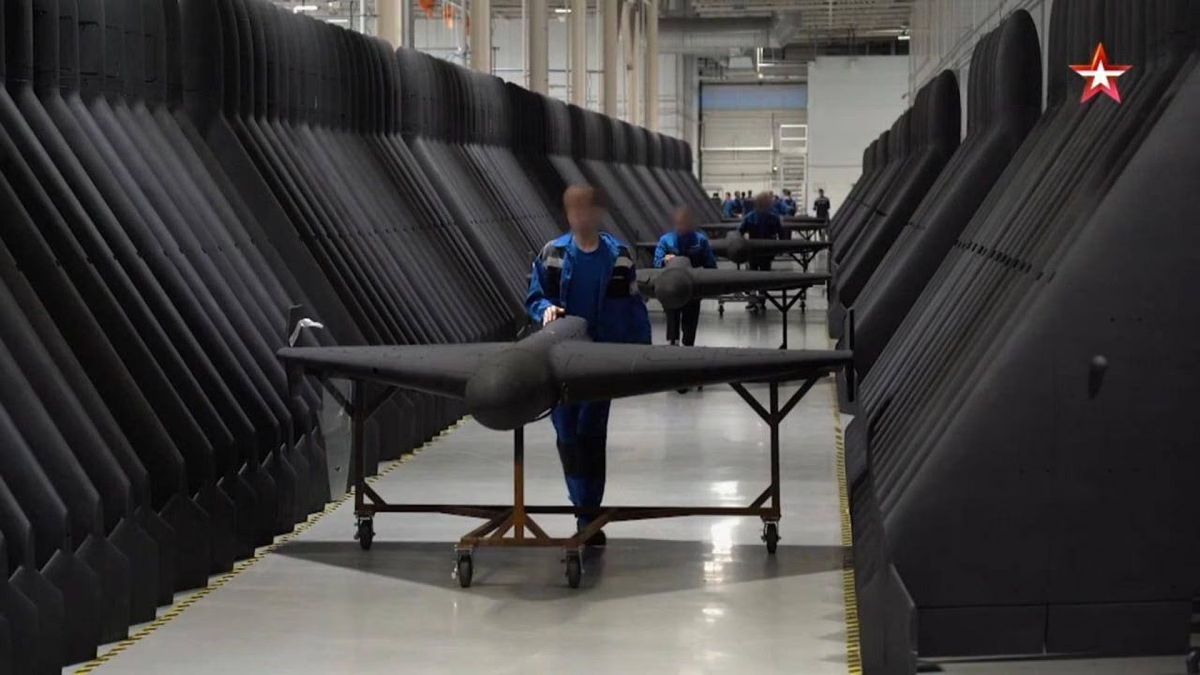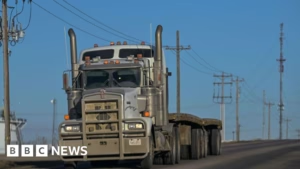ADVERTISEMENT
Russia’s production of thousands of long-range suicide drones monthly at a factory partially staffed by teenagers is reaching new heights as Moscow gears up to launch up to 2,000 drones every night against Ukraine.
A video featured by the Russian Defence Ministry’s television network showcases the Yelabuga plant near Kazan, where students and staff, including teenagers who have finished ninth grade and mostly hail from a nearby technical college, are seen producing Geran-2 drones, the Russian variant of the Iranian Shahed.
These teenagers, some as young as 15, are actively involved in the factory’s production line, assembling drone parts and working on computers, as highlighted in the video’s narration.
The video also captures a banner proclaiming “Kurchatov, Korolyov, and Stalin live in your DNA,” paying homage to Soviet physicist Igor Kurchatov, father of the Soviet atomic bomb programme, and Serhiy Korolyov, a prominent spacecraft designer during the Cold War’s Space Race.
Interestingly, Korolyov was of Ukrainian descent.
Tehran-produced Shahed drones and their Russian counterparts have become essential in Russian President Vladimir Putin’s strategy to persistently bombard Ukrainian cities and civilian targets, aiming to demoralize the country amidst Moscow’s ongoing four-year conflict.
During his visit to the Yelabuga plant, Putin suggested replicating this model nationwide to decrease Russia’s reliance on Iranian imports, as per the video.
European defence officials suspect Russia is planning to deploy thousands of inexpensive Shahed drones each night as the production volume surges, with the Yelabuga plant expected to manufacture up to 18,000 drones in the first half of 2025 alone.
On average, over 500 UAVs and missiles are currently launched by Russia towards Ukraine on a nightly basis, and it’s believed Moscow’s capacity to strike could soon escalate to 1,000 drones and missiles per day.
On July 9th, Russia executed its most extensive attack on Ukraine, firing 741 missiles and drones into the country’s cities and regions.
Shahed drones are relatively low-cost, priced between €30 and €45 each.
In contrast, Ukraine’s Western-supplied air defense systems are expensive. For instance, a single Patriot missile for intercepting Russian launches costs around $5.5 million.
Generalmajor Christian Freuding, a top German military figure, recently cautioned that Ukraine and its allies must intensify their defensive capabilities to create more cost-effective air defenses against increasing Russian attacks.
Generalmajor Freuding indicated that Russia aims to possess the capability to launch 2,000 drones at night, presenting a significant challenge to defense systems.
Established in 2023, the Yelabuga facility is situated within the Alabuga Special Economic Zone, near the city of Kazan and along the Kama River, which is linked to the Caspian Sea via the Volga River—facilitating trade with Iran.
The Geran-2 drone measures around 3.5 meters, weighs approximately 200 kilograms and can carry a 50-kilogram warhead, designed to hit targets up to 1,800 kilometers away at a speed of 300 km/hr.






